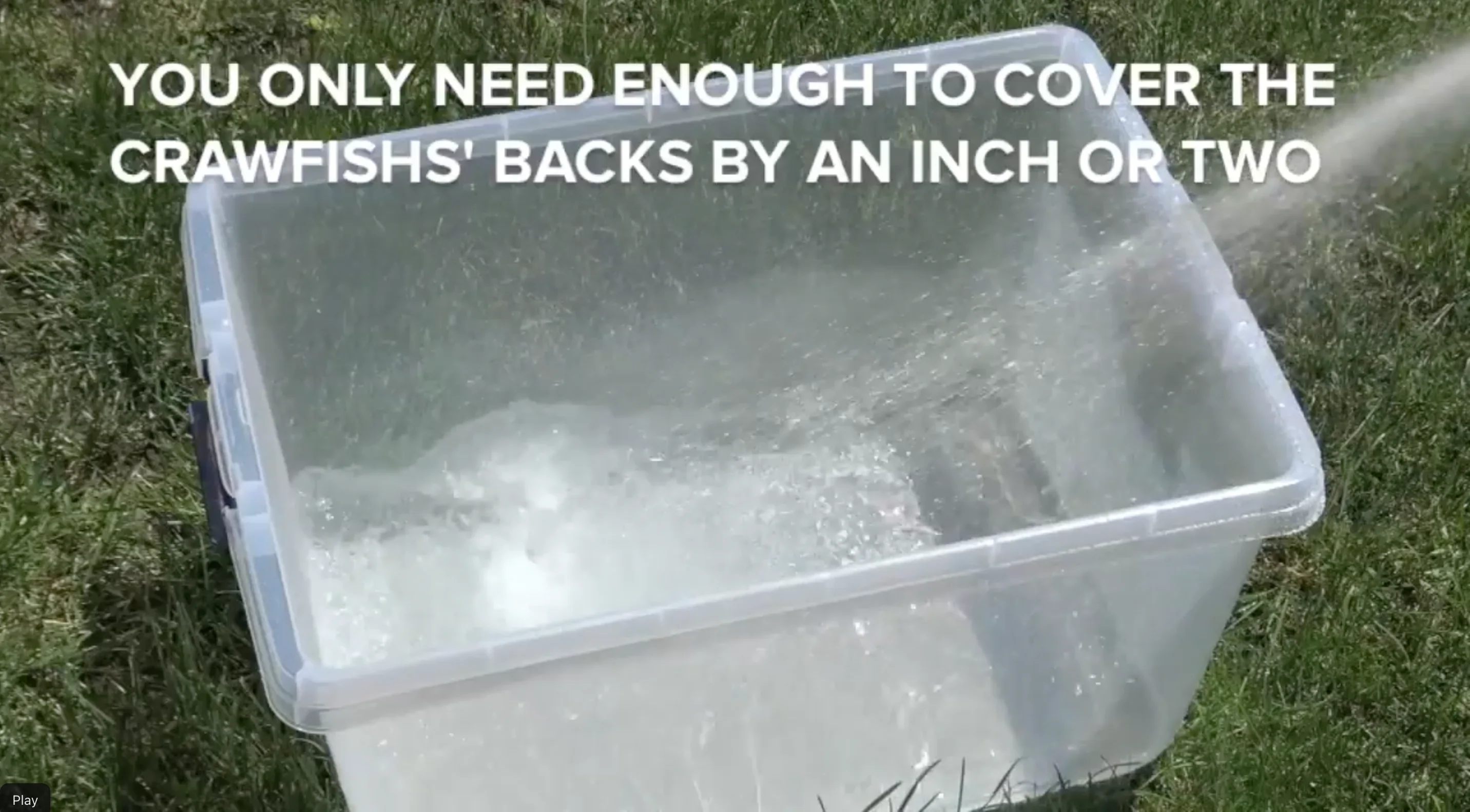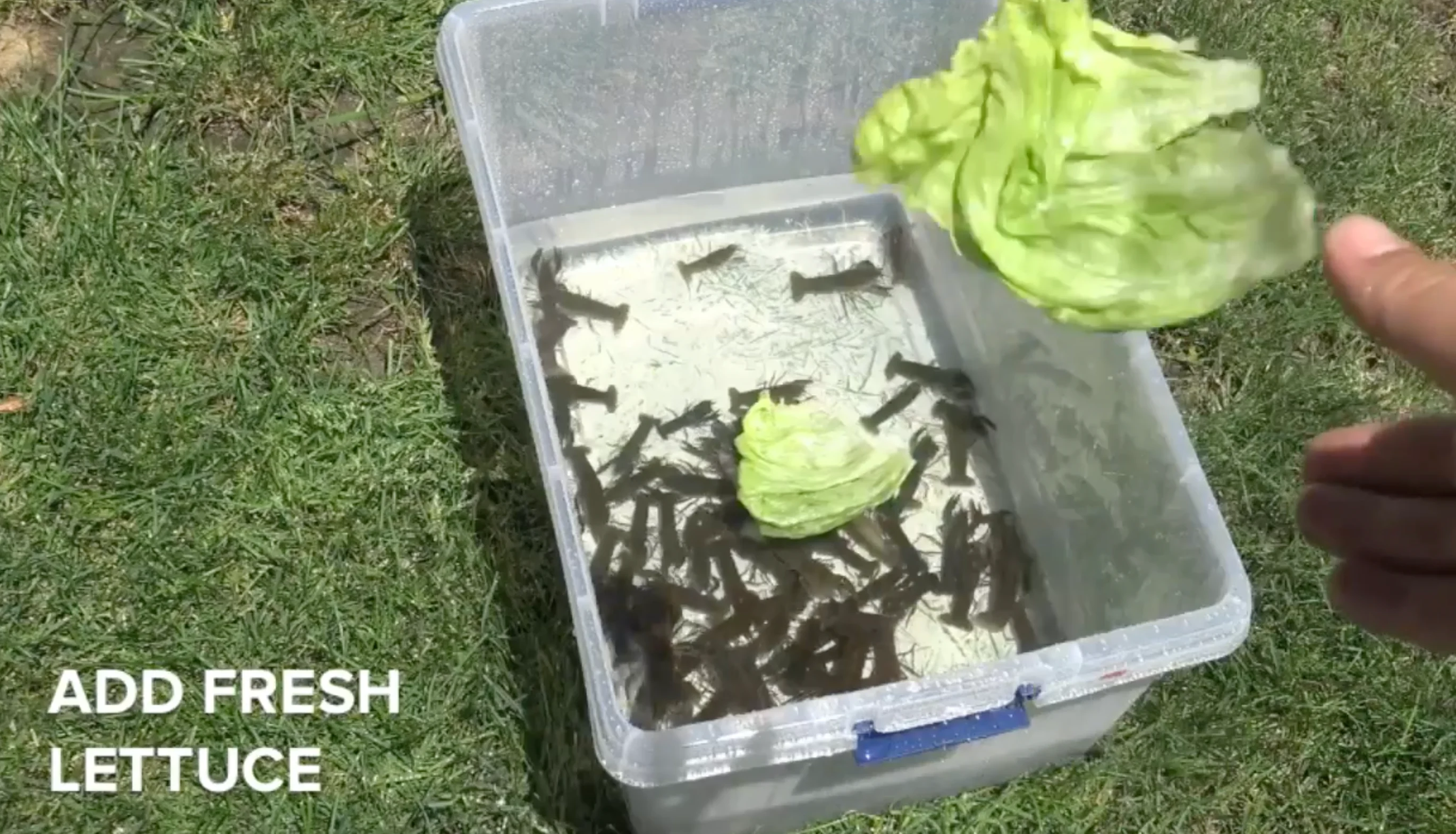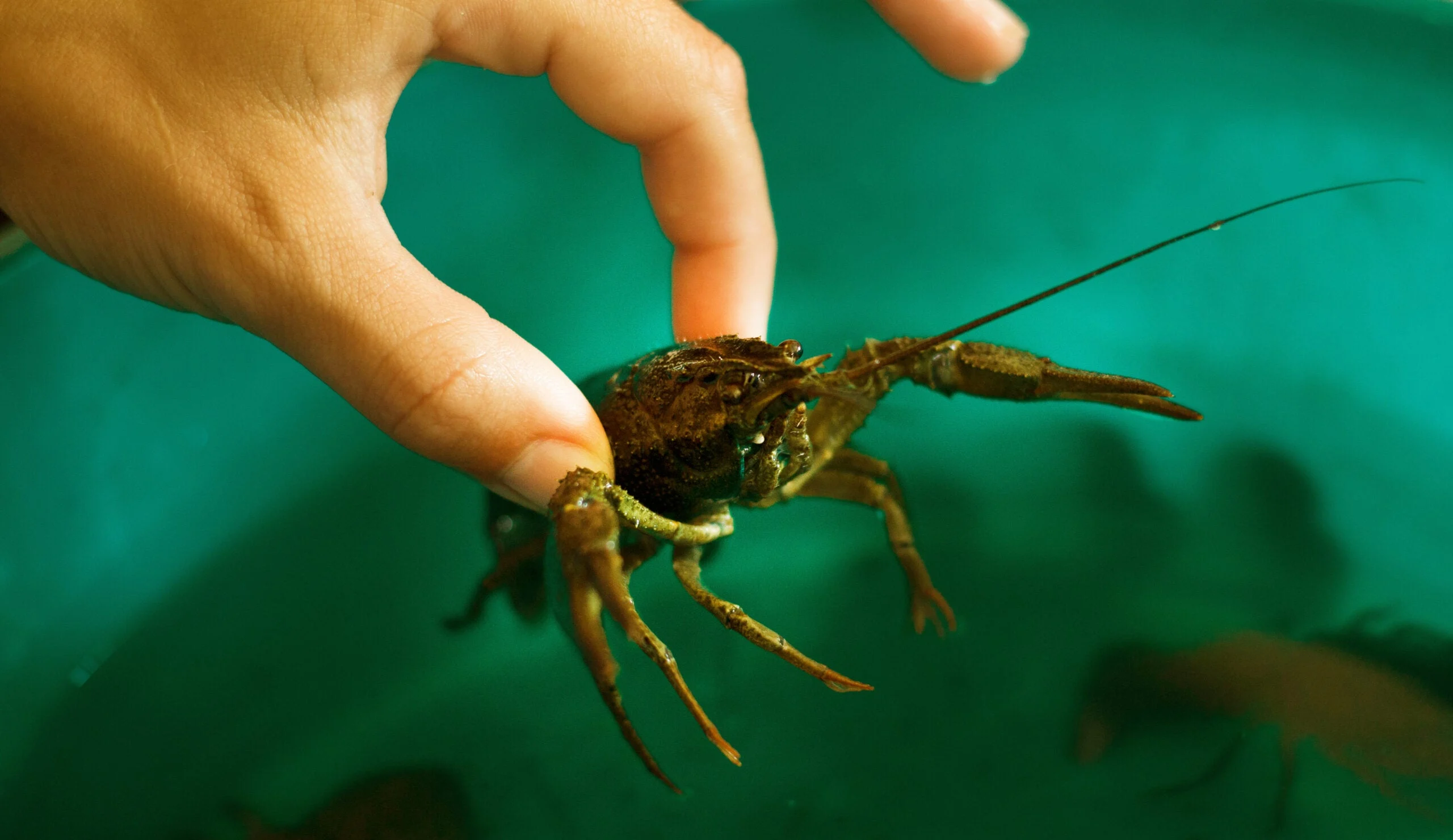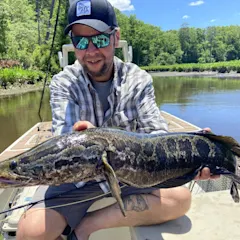As live bait goes, it’s hard to beat crawfish for trout, bass, catfish, and more—yet they are wildly underused. That’s because it’s rare to find them for sale in bait shops. There are no commercial operations catching or raising crawfish for anglers like they do with worms, leeches, crickets, and shiners. In the deep South, they are targeted commercially so folks can host crawfish boils, of course, but in most other regions in the country, if you want them, you need to learn how to catch crawfish
yourself. And if you want to have them readily on hand to use for bait, you also need to learn how to keep crawfish alive. For that, check out the video below. And for the full rundown on how to catch them and keep them, keep reading.
See How to Keep Crawfish Aliveon YouTube
Watch this instructional video for how to keep crawfish alive for weeks in a simple plastic tote.
Table of Contents
Catch and Keep Crawfishing
How to Keep Crawfish Alive in a Plastic Tote, Step-By-Step
Step One: Get a Bin and Drill Holes in the Top
Step Two: Add Water to Keep Crawfish Alive
Step Three: Feed Them Lettuce
Step Four: Rinse and Repeat to Keep Crawfish Alive for Weeks
Catch and Keep Crawfishing
I’ve always been surprised that more anglers don’t give crawfish a shot, because not only do they make terrific baits for a wide variety of species but gathering a bunch can be more fun than fishing with them. Where I live in the Northeast, almost every rocky creek and brook is loaded with crayfish. All you have to do is grab a fine mesh net
, get in the water with an old pair of sneakers, start flipping rocks, and scoop the crawfish underneath. I love them for smallmouth bass when presented under a bobber. Channel catfish go nuts for them when fished on the bottom. Bowfins and largemouths can’t resist a juicy crawfish, and I’ve even had success using them for trout in the fall. It can take some effort, however, to get a hold of a few dozen and catching only what you need for a few hours of fishing can be impractical. Years ago, I started keeping crawfish at home, which allowed me to spend an entire day just catching bait and then having a supply on hand for multiple outings. With a few inexpensive items, you can learn how to keep crawfish alive, too, but before I break down the plan, I must give a disclaimer.
One of the reasons why crawfish can be hard to find in tackle shops is because some states don’t allow them to be sold for fear of introducing the crustaceans to waters where they don’t already exist. Crawfish populations can explode and become destructive to an ecosystem, so it’s critical that you check local regulations. First, you need to see if there’s a daily limit on the number of crawfish you can catch and keep, and, second, you need to make sure it’s legal to transport them from one body of water to another in your state. If you’re using them for bait in the same water in which you caught them, you’re in the clear, but it’s still important to check the rules. Now here’s how to build a little home for you baits and how to keep them alive for weeks.
How to Keep Crawfish Alive in a Plastic Tote, Step-By-Step
Just about any plastic bin or tote will work, but you need to make some modification and do a little maintenance to keep your crawfish happy, fed, and alive. Here’s the drill in four simple steps.
1. Get a Bin and Drill Holes in the Top

Joe Cermele
The first thing you’ll want to do is head to your local Wal-Mart or Big Lots or any big box store that sells inexpensive plastic storage totes with lids, preferably ones that are clear. The one I use is roughly 23×17 inches with a 13-inch depth. Next, use a ¼-inch bit to drill approximately a dozen holes all over the lid of the tote.
2. Add Water to Keep Crawfish Alive

Joe Cermele
Understand that crawfish have a pretty high tolerance for dirty water, and they can live in it for quite a while. To maximize their life span in your homemade crawfish tote, however, you’re going to want the ability to change the water. This might sound simple enough, but there are a few things to consider.
For starters, it’s worth pointing out that your crawfish tote will effectively keep crayfish alive for a few weeks if you’re diligent with upkeep. If you’d rather have piles of live crayfish on hand for months and months, investing in a tank with a filter is a better option. I tend to load up my tote in the middle of the summer when I know I’ll want crawfish for upcoming outings. What I also know is that my tap water happens to be agreeable to crawfish, but that’s not always the case.
High levels of chlorine can kill your crawfish. Folks that rely on well water won’t have this issue. Unless you live close to a natural water source, like a pond or creek, you might want to grab a bottle of water conditioner
from a pet shop. A little goes a long way, and one bottle will last for years. It’s worth it to avoid spending hours catching crawfish only to have them all die. Finally, you don’t need to fill the tote to the brim. Roughly 6 to 8 inches of water is fine.
3. Feed Them Lettuce

Joe Cermele
You’re going to want to feed your crawfish, and I’ve found that romaine lettuce is the perfect option. You could use bacon (but wouldn’t you rather eat that yourself?) and you could use fish guts or expired meat, but all these foods will make the water very gross, very fast. The lettuce, conversely, floats and the crayfish can consume even the rib, often leaving nothing left to rot or pick out of the tote.
4. Rinse and Repeat to Keep Crawfish Alive for Weeks

Adobe Stock
You’ll notice that every three days or so, the water will have gotten pretty cloudy. After picking out any remaining lettuce bits and any dead crayfish, simply flip the tote over and let the old water drain through those holes you drilled in the lid. Then refill. Store the tote in a shady area or in your garage or basement. As the plastic heats up, it can raise the water temperate quickly, which can also kill the crayfish.
My final tip is: Don’t just read this and say “Hmm. I oughta try that.” Go get the stuff you need now, build the “tank,” and catch some crawfish so you can find out for yourself this summer how many fish you can catch by using live crawfish for bait.


